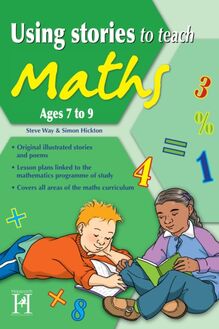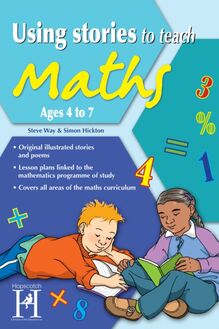-
 Univers
Univers
-
 Ebooks
Ebooks
-
 Livres audio
Livres audio
-
 Presse
Presse
-
 Podcasts
Podcasts
-
 BD
BD
-
 Documents
Documents
-
- Cours
- Révisions
- Ressources pédagogiques
- Sciences de l’éducation
- Manuels scolaires
- Langues
- Travaux de classe
- Annales de BEP
- Etudes supérieures
- Maternelle et primaire
- Fiches de lecture
- Orientation scolaire
- Méthodologie
- Corrigés de devoir
- Annales d’examens et concours
- Annales du bac
- Annales du brevet
- Rapports de stage
La lecture à portée de main
Vous pourrez modifier la taille du texte de cet ouvrage
Découvre YouScribe en t'inscrivant gratuitement
Je m'inscrisDécouvre YouScribe en t'inscrivant gratuitement
Je m'inscrisEn savoir plus
Vous pourrez modifier la taille du texte de cet ouvrage
En savoir plus

Description
Sujets
Informations
| Publié par | Andrews UK |
| Date de parution | 23 juillet 2013 |
| Nombre de lectures | 0 |
| EAN13 | 9781909102569 |
| Langue | English |
| Poids de l'ouvrage | 1 Mo |
Informations légales : prix de location à la page 0,0800€. Cette information est donnée uniquement à titre indicatif conformément à la législation en vigueur.
Extrait
Title Page
USING STORIES TO TEACH ICT AGES 9 TO 11+
Anita Loughrey
Publisher Information
Published by Hopscotch,
a division of MA Education,
St Jude’s Church, Dulwich Road,
London, SE24 0PB
www.hopscotchbooks.com
020 7738 5454
©2011, 2013 MA Education Ltd
Written by Anita Loughrey
Designed by Claire White,
Fonthill Creative, 01722 717029
Illustrated by Kerry Bailey
All rights reserved. This resource is sold subject to the condition that it shall not, by way of trade or otherwise, be lent, hired out or otherwise circulated without the publisher’s prior consent in any form of binding or cover other than that in which it is published and without a similar condition, including this condition, being imposed upon the subsequent purchaser.
No part of this publication may be reproduced, stored in a retrieval system, or transmitted, in any form or by any means, electronic, mechanical, photocopying, recording or otherwise, without the prior permission of the publisher, except where photocopying for educational purposes within the school or other educational establishment that has purchased this book is expressly permitted in the text.
Every effort has been made to trace the owners of copyright of material in this book and the publisher apologises for any inadvertent omissions. Any persons claiming copyright for any material should contact the publisher who will be happy to pay the permission fees agreed between them and who will amend the information in this book on any subsequent reprint.
Acknowledgements: ‘The Fairground’ published with kind permission from Anita Loughrey. Previously published in: Here Comes the Fair Life with the Travelling Showmen by the Ahmed Iqbal Ullah Education Trust.
Introduction
ICT and the Primary Curriculum
Today children will arrive at school with an extensive knowledge of ICT and its capabilities. They have a knowledge and understanding that can sometimes be beyond some adults. The aim in school today is to harness their experiences and use them to enhance their learning in school.
ICT today is one of the best and fastest growing tools available for learning. It helps to: Make difficult and abstract concepts easier to explore Make learners partners in their formal learning Motivate learners and keep them engaged in learning Open up dialogue with parents and extend learning Personalise learning and give learners a voice Raise standards Reach the hard-to-reach. Save you time and be more efficient.
In order for children to use and apply their ICT knowledge and understanding confidently and competently in their learning and everyday contexts, exciting and stimulating lessons must be provided.
ICT is no longer viewed as a separate curriculum subject but permeates all the other subjects. The children should be provided with stimulating activities that allow them to explore and become familiar with the technology resources available in the school, across a wide range of different subject areas.
About the series
The ‘Using Stories to teach ICT’ series of books demonstrates how ICT skills can be taught and extended whilst linking to a wide variety of other subject areas. There are four books in the series - two at Key Stage 1 and two at Key Stage 2.
They offer a structured approach with the non-specialist in mind and provide detailed lesson plans to teach specific ICT skills whilst linking to other areas of the curriculum. Each book contains ideas for communication, modelling, presentation, databases and control.
The aim is for ICT to be presented in a format that shows how information technology is used in our everyday lives. The imaginary situations portrayed in the stories act as a stimulus for the children’s own investigations and creative work. The ideas in this series can be adapted to teach all areas of the curriculum.
Format of the books
Each book contains six stories that require the children to use and extend different ICT skills. Each story is accompanied by teachers’ notes containing four separate lessons that can be used in conjunction with the story. Every lesson plan has a corresponding activity sheet.
The teachers’ notes are broken down into the learning objective and the curriculum links with some suggestions for the type of hardware and software that will need to be made available. The activities have been sub-divided into: Resources - this is a list of what you will need to do the lesson Introduction - ideas to introduce the activities, with key questions and discussion points to reinforce the concepts and vocabulary required for the lesson Main activity - ideas for grouping and using the activity sheets Plenary - an opportunity to review and discuss the learning outcomes so children reflect on what they have learnt Extension - further ideas to extend their skills and technological knowledge.
The activity sheets can be found at the end of each chapter.
About the stories
The stories are designed to be a springboard to develop ICT within the classroom throughout a wide range of subjects due to the broad selection of cross-curricular links.
If possible enlarge copies of the story or project it on to a whiteboard so the children are able to see the illustrations and may be able to follow along as you read it aloud to the class. As the children get older and their vocabulary improves, encourage the children to read the stories aloud to each other.
There is a lot of scope for initiating a discussion about the wide range of technology used in our everyday lives and for extending from the given lesson ideas to your own ICT based projects.
Using the lesson plans
Within the planning we have added reference statements headed WALT, WILF and TIB as these or similar systems are often used to ensure lessons are focused, objective led and in context for the learner. They help summarise the purpose of the lesson, what is required of the children in order for them to successfully learn that lesson and why what they are learning is important.
WALT stands for “We Are Learning Today”
WILF stands for “What I’m Looking For”
TIB stands for “This Is Because”
Curriculum Overview
This chart gives an overview of the ICT covered by each story and the cross-curricular links covered by the activities over all four books in the Using Story to Teach ICT series. The relevant information for this book, aged 9-11+, is shaded.
Interior Designer
Teacher’s Notes
Learning Objective
To use an object-based graphics package to create, combine and manipulate objects and explore possibilities.
Curriculum Links
Art Explore digital media and design software Design and create images for clearly defined purposes Select, develop and refine techniques to represent their ideas and express themselves.
For these activities an object-based graphics package, such as Spex+, would be preferable. This is a very easy to use graphics program and a trial version is available to download from the Internet from the Spex+ website.
It is also possible to use the Drawing tool in Word, although it is a little more complicated. You can open a drawing canvas by clicking on Shapes on the Insert Tab and scroll down to the New Drawing Canvas option. The gridlines option can be found on the View Tab. Various shapes can be selected and arranged on the grid. If you right click on the canvas you can set to scale by clicking the Scale Drawing option, if desired.
Activity One - Arrange the Furniture
Resources ‘Interior Designer’ story ‘Arrange the Furniture’ activity sheet Paint program Object-based graphics package, such as Spex+ or similar, or the Drawing function in Word. Computers Digital projector Whiteboard Laptop.
Introduction
Read the ‘Interior Designer’ story to the class. Ask the children why did Jason have problems decorating his bedroom? What did Trisha do that helped her to buy the correct amount of paint and to arrange the furniture in her bedroom?
Explain how it is possible to use a graphical design package to make a model of any room on the computer. Ask the children why this would not work in a program like Paint. Demonstrate how it is possible to move parts of a picture around in Paint, but not individual objects.
Tell the children a graphic model program, such as Spex+ , allows the user to move individual objects around the screen and place them on a grid. Ensure you have created, or selected, the elements ready before the lesson begins. This way the children can concentrate on selecting and arranging the objects rather than creating them at this stage.
Main Activity
Give each child a copy of the ‘Arrange the Furniture’ activity sheet. Point out the key and ensure they understand what each of the objects represents. Explain the objects are an aerial view. Suggest they cut out the objects on the key and place them on the grid. This will give them more freedom to manipulate the different elements.
Demonstrate on the computer how they can snap the objects to a grid in an object-based graphics package such as Spex +. It is also possible to use the Drawing tool in Word. If using Word, create the grid and objects before the lesson begins and save the document ready for each child to open and use. Various shapes can then be selected and arranged on the grid.
Ask the children to transfer the bedroom plan they have worked out on the ‘Arrange the Furniture’ activity sheet, to the computer. Remind the childre
-
 Univers
Univers
-
 Ebooks
Ebooks
-
 Livres audio
Livres audio
-
 Presse
Presse
-
 Podcasts
Podcasts
-
 BD
BD
-
 Documents
Documents
-
Jeunesse
-
Littérature
-
Ressources professionnelles
-
Santé et bien-être
-
Savoirs
-
Education
-
Loisirs et hobbies
-
Art, musique et cinéma
-
Actualité et débat de société
-
Jeunesse
-
Littérature
-
Ressources professionnelles
-
Santé et bien-être
-
Savoirs
-
Education
-
Loisirs et hobbies
-
Art, musique et cinéma
-
Actualité et débat de société
-
Actualités
-
Lifestyle
-
Presse jeunesse
-
Presse professionnelle
-
Pratique
-
Presse sportive
-
Presse internationale
-
Culture & Médias
-
Action et Aventures
-
Science-fiction et Fantasy
-
Société
-
Jeunesse
-
Littérature
-
Ressources professionnelles
-
Santé et bien-être
-
Savoirs
-
Education
-
Loisirs et hobbies
-
Art, musique et cinéma
-
Actualité et débat de société
- Cours
- Révisions
- Ressources pédagogiques
- Sciences de l’éducation
- Manuels scolaires
- Langues
- Travaux de classe
- Annales de BEP
- Etudes supérieures
- Maternelle et primaire
- Fiches de lecture
- Orientation scolaire
- Méthodologie
- Corrigés de devoir
- Annales d’examens et concours
- Annales du bac
- Annales du brevet
- Rapports de stage








